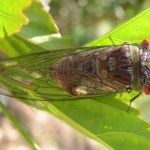antibacterial
Here is the 4th most popular post so far this year:
Picture of a komodo dragon by CC BY-SA 3.0, via Wikimedia Commons
Researchers studying komodo dragons (Varanus komodoensis) at George Mason University discovered 48 previously unknown peptides in their blood that might have antimicrobial properties. Their findings were published in the Journal of Proteome Research. For the largest lizard, these peptides may help prevent the animals from getting infections from their own saliva, which is host to at least 57 species of bacteria. With this number of bacteria, it is …
“Millions of Americans use antibacterial hand soap and body wash products. Although consumers generally view these products as effective tools to help prevent the spread of germs, there is currently no evidence that they are any more effective at preventing illness than washing with plain soap and water,” wrote the US Food and Drug Administration (FDA) in issuing a proposed rule last month. “Further, some data suggest that long-term exposure to certain active ingredients used in antibacterial products—for example, triclosan (liquid soaps) and triclocarban (bar soaps)—could pose health risks,…
Image from Flickr EOL; Taken by Arthur Chapman
The animation below from Nature shows a bacteria rupturing after landing on nanopillars present on the surface of a clanger cicada (Psaltoda claripennis) wing. Dr. Ivanova (Swinburne University, Australia) and colleagues showed that nanopillars rupture the bacteria by straining the cell wall.
Some scientists see this as an opportunity to create anti-bacterial surfaces in public places simply by coating the surface of objects with nanopillars.
Sources:
Nature
Pogodin S, Hasan J, Baulin VA, Webb K, Khanh Truong V, Nguyen THP, Boshovikj V,…
